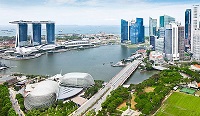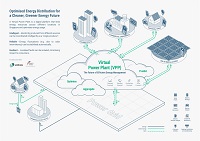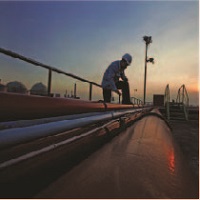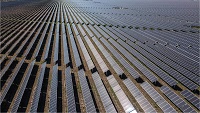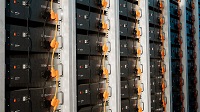For more information, please refer to:
Dr Fesharaki, Chairman and CEO of FACTS Global Energy,
Distinguished Guests,
Ladies and Gentlemen,
I am very happy to join you for this "LNG Supplies for Asian Markets" conference.
GLOBAL LNG OUTLOOK AND DEVELOPMENTS
2009 has been an eventful year for the global energy industry. Asian economies have not been spared the effects of the downturn. But the longer-term prospects for the region remain sound. As demand picks up, Asian economies will need more energy to power their growth. Many are already looking for cleaner and more efficient sources to sustain their electricity generation, and they see natural gas as an attractive fuel choice.
On the demand side of the equation, the LNG industry in Asia has come a long way since Japan imported its first LNG cargo from Alaska in 1969. Over the years, countries like China, India, South Korea, and Taiwan have established themselves as long-term LNG buyers. Today, Asia accounts for around two-thirds of the world’s LNG imports, and this share is likely to increase over time to meet rising Asian demand.
On the supply side, production facilities in the region are expanding. Malaysia and Indonesia are already top LNG producers in Asia. Australia is poised to become the world’s second largest LNG producer after Qatar with major projects slated to come on-stream over the next few years, including the Gorgon project in Western Australia and the multiple efforts by companies to export vast coal-seam gas reserves from Queensland. New technologies in the form of offshore liquefaction vessels and floating regasification facilities will also provide industry players with more flexible options for producing and acquiring LNG.
With all these developments, all of us can look forward to a truly exciting time for the LNG business in Asia. Increasingly, the centre of gravity of the LNG market will shift towards the region. The world’s largest buyers of LNG are here, as are the bulk of new LNG supplies. All this will open up new opportunities for growth and add to the vibrancy of the Asian LNG market.
LNG IN SINGAPORE
Singapore is a new entrant to the world of LNG. Our LNG journey started in 2006 when the Government decided to import LNG to diversify our gas supply sources and enhance our energy security.
Given the small size of our domestic market, we recognised that individual end-users would not have sufficient economies of scale to purchase LNG on their own, and we also felt that it would be more cost-effective for a single entity to aggregate demand amongst potential users. Hence we undertook a competitive selection process to select an LNG Aggregator for Singapore. Through this process, BG was awarded the exclusive right to import up to 3 million tonnes per annum (Mtpa) of LNG. BG is now negotiating gas sales agreements contracts with our power generation companies and we expect an initial tranche of around 1.5 Mtpa of regasified LNG to be finalised quite soon.
At the same time, we have been working hard on the development of Singapore’s first LNG import terminal. The terminal will be sited on 30 hectares of reclaimed land in Jurong Island. It will initially have two storage tanks of 188,000 cubic metres each, with a sendout capacity of 3.5 Mtpa, and a jetty capable of accepting the newest and largest Q-max vessels.
The LNG terminal was originally envisaged as a commercial project. However, with the onset of the economic downturn, it was difficult for the project to proceed on a commercial basis. Hence, in June last year, the Government decided to take over the development and ownership of the terminal to ensure its timely completion, and a new company, Singapore LNG Corporation Pte Ltd (SLNG), was formed for this purpose.
Over the past few months, SLNG has made significant progress in the development of the terminal. In particular, I am glad that yesterday SLNG announced the award of the turnkey contract for the engineering, procurement and construction (EPC) of the terminal to Samsung. SLNG has also appointed Foster Wheeler as its Project Management Consultant. The notice to proceed has been issued to the EPC contractor and we plan to hold a ground-breaking ceremony to kick-off the construction soon. If the construction work proceeds according to schedule, the LNG terminal should be on track to commence operations in 2013.
OPPORTUNITIES FOR LNG TRADING
Besides providing a critical infrastructure to meet our domestic gas needs and energy security requirements, the LNG terminal will also serve as a hub for physical LNG trading, transhipment and regional redistribution.
During the initial years before local LNG demand ramps up, there will be unutilised storage capacity in the terminal, and we intend to use this storage capacity for physical LNG trading. As part of this "Storage and Reloading" service, LNG traders will be able to deliver and store LNG in the tanks, and reload the LNG at a later stage for exports. Any boil-off arising from the trader's cargo will be attributed to domestic consumption. In other words, traders using this service will experience zero boil-off losses, unlike conventional floating LNG storage where boil-off losses are typically in the region of four per cent per month. We hope that this will make our terminal better suited to seasonal storage of lower-priced summer cargoes for resale during the higher-priced winter months. The availability of flexible LNG storage in Singapore may also interest LNG producers who have storage constraints at their liquefaction plants.
Naturally, the storage capacity available for trading within the terminal will diminish as Singapore’s domestic LNG demand rises. However, if there is keen interest by industry players to use the LNG terminal in Singapore for trading, we will be happy to consider building additional tanks for physical LNG trading. And we have plans for this because the site layout for the terminal has sufficient space for the addition of up to four more storage tanks as well as the appropriate regasification facilities, and also a second jetty. There is also potential to use the space for other synergistic activities, be it storage and trading of LPG, or harnessing the LNG’s cold energy for productive use as is the case in many terminals worldwide. These are ideas which the SLNG is studying. It is developing its business model around many of these activities and I am sure it will be very happy to engage with companies and industry players on feedback and inputs so that we can maximise the value of the terminal.
Overall we believe Singapore is in a good position to become a major player in the LNG trade in Asia. We are strategically located along popular sea routes and have a rich history in trading. We offer a long-term and stable environment for companies to do business here. Worldwide we have a trusted brand name and reputation for integrity, quality and reliability. These competitive advantages have enabled us to prosper as one of the world’s leading commodity trading hubs, particularly for energy, and we think these same competitive advantages will put us in a strong position to be a centre for LNG trading.
We have just started and so it is something that we would hope to build over the long term but companies have already taken notice of our efforts and responded positively. For example, Gazprom has opened a Singapore office to oversee its LNG trading operations in the region. More recently, ConocoPhillips has decided to relocate its global headquarters for LNG from Houston to Singapore. We welcome these developments, and hope to encourage and engage even more companies to add to the eco-system that we are building here and work with us, join us in partnership to develop and grow the LNG industry in Singapore.
CONCLUSION
Singapore may be a newcomer to LNG, but we are a committed long-term player and we are determined to play a constructive role in the development of the Asian LNG industry. Whether in energy or other sectors, Singapore’s value proposition has always been to ensure that we excel in what we do, deliver on what we promise, and provide a high-quality business and living environment for our partners.
Events like this conference add to the buzz and excitement that we hope to create for the LNG industry here, where people from all over the region, where industry players can gather to exchange views, where buyers and sellers can meet and forge new partnerships, seize new opportunities. In conclusion, I believe the prospects for LNG in Asia are strong, and there is certainly much to discuss at a gathering like this. I wish all of you a fruitful deliberation and a rewarding conference in Singapore.
